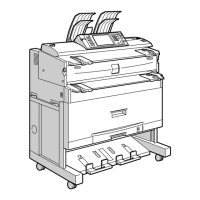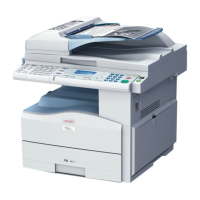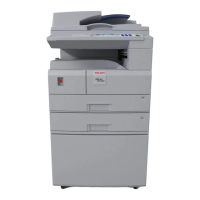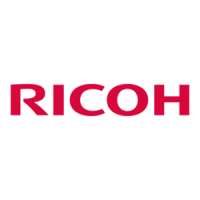Copy Paper
67
3
Note
❒ Load paper into the cut paper tray with the print side down.
❒ Load paper into the bypass tray with the print side up.
❒ You must manually specify the size of custom size paper when loading it on
the bypass tray.
❒ If multiple-sheet jams occur, load the paper sheet by sheet.
❒ Do not use paper designed for inkjet printers, as these may stick to the fusing
unit and cause a misfeed.
❒ If you load paper of the same size in the same orientation in two or more
trays, the machine automatically shifts to the other tray - except the bypass
tray - when the first tray in use runs out of paper. This function is called “Auto
Tray Switching”. (However, if one tray has recycled or special paper, the set-
tings of the other trays must be the same for Auto Tray Switching to work.)
This saves interrupting a copy run to replenish paper when making a large
number of copies. See “Copier / Document Server Features”, and “Tray Pa-
per Settings”, General Settings Guide.
Reference
“Copier / Document Server Features”, General Settings Guide
“Tray Paper Settings”, General Settings Guide
Bypass tray Translucent paper
(vellum)
• Engineering
E (34"×44")K,
D (22"×34")KL,
C (17"×22")KL,
B (11"×17")KL,
A (8
1
/
2
"×11")K
•Architecture
E (36"×48")K,
D (24"×36")KL,
C (18"×24")KL,
B (12"×18")KL,
A (9"×12")K
1 sheet
Bypass tray Film • Engineering
E (34"×44")K,
D (22"×34")KL,
C (17"×22")KL,
B (11"×17")KL,
A (8
1
/
2
"×11")K
•Architecture
E (36"×48")K,
D (24"×36")KL,
C (18"×24")KL,
B (12"×18")KL,
A (9"×12")K
1 sheet
Where paper is
placed
Paper type Paper size Number of
sheets that
can be
placed

